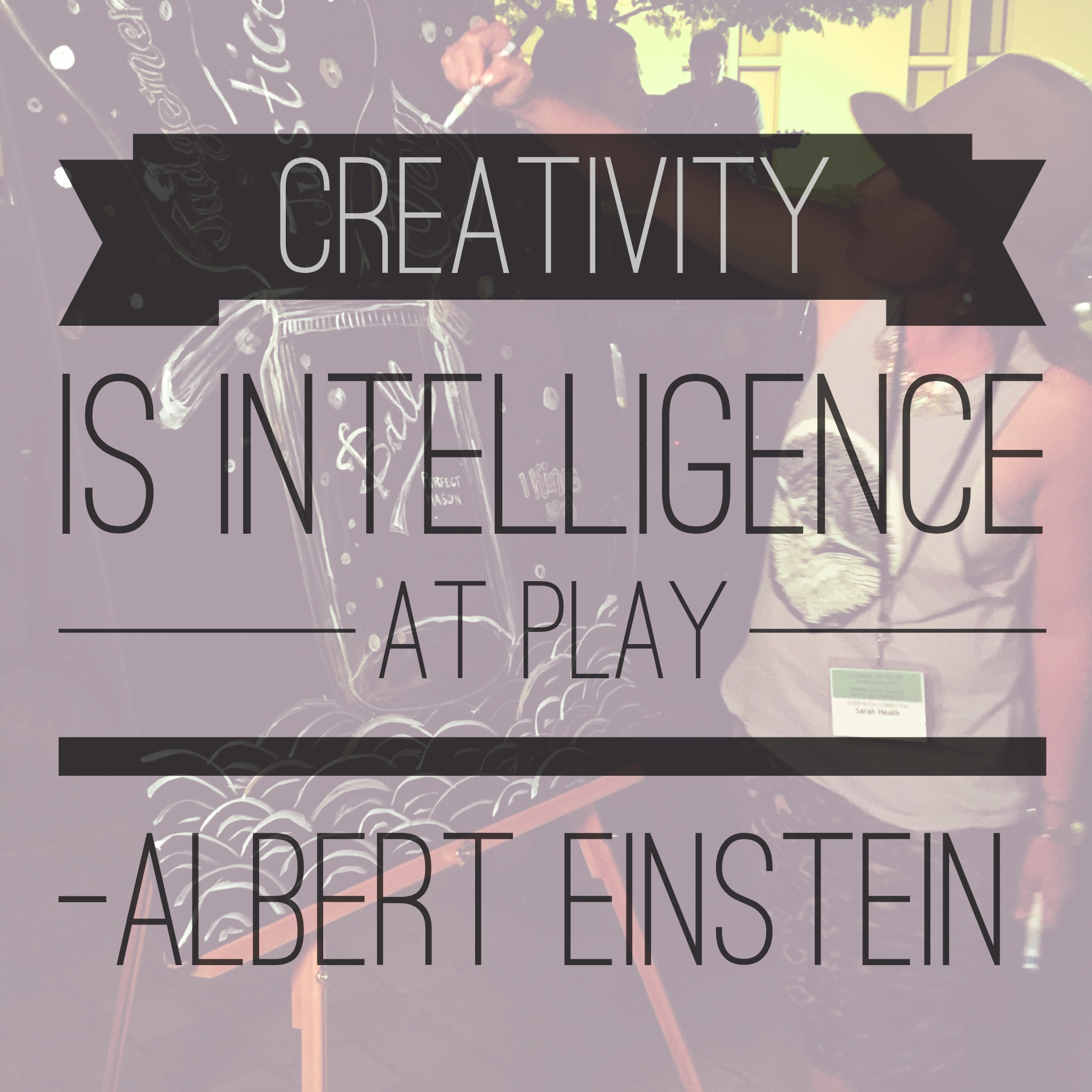
“We were created to create.” I am not sure where I first heard it, but I think I have always intrinsically known it was true. I feel closest to God when I am creating. When I lose myself in writing, painting, singing, or even poorly playing my guitar, I am worshiping. The problem is when we only define creativity by the performing or visual arts – then we miss out on celebrating and seeing people connecting to God through other creative endeavors that we might label as left-brained.
Recently, I had the pleasure of speaking with Dan Wunderlich of www.defininggrace.com for his podcast “Art of the Sermon.” It was a wonderful conversation, and I would love for you to check out not just my episode, but other episodes in his podcast (link below). As he and I were talking about creativity and experiencing God, he shared with me that his wife has a tough time with prayer stations and other active worship experiences that only engage the visual arts. Dan’s wife is a science, numbers-minded person, and in her words, “would rather organize information in a poorly organized excel spreadsheet to make sense of it and provide helpful meaning of chaos than create a finger painting.” I want to suggest that her form of creativity is just as important and needed. We need excel artists.
Last week I shared an image I made for New Year’s, stating that we were on page 1 of 365 and we have the capability of writing a different story this year. I loved all the comments. Most pointed out that this year we have 366 days since it is a leap year. One comment that stood out was from a friend who would probably not describe himself as a creative. He has a creative flair, but he is a systems kind of pastor – one who studies numbers and statistics. He shared with me that the post challenged him to consider writing a page a day for 365 days and seeing what comes out of it, perhaps even a book. I am excited to see what he may create. It is sure to be something powerful and creative!
Creativity is simply creating order where none existed before. Whether that be organizing numbers to make meaning or organizing paint to make an image, we are simply taking what seems random and bringing it into order. I think that is how God works – by taking the seemingly random and creating meaningful order.
I wonder how we as a church can engage those who don’t connect to visual arts but are in no way less creative. How can we challenge ourselves to create worship experiences for those who engage God using logic, study, and organization? So I invite your thoughts: How can we challenge ourselves to think beyond just visual arts prayer stations?
** to listen to “Art of the Sermon” please go to: http://www.defininggrace.com/aots/007/
I was just discussing something similar with my friend around retreats (outdoor vs creative vs sitting in the cabin reading a book kids)…he’s just in the process of designing a co-operative decoding game for the latter…including everyone in serious ways is important.
Anyways – as far as including logic/study/organization in worship – some of the best sermons I’ve seen have included experiments (to illustrate points) – or include actual scientists/docters etc to discuss points (i.e. http://media.themeetinghouse.com/vpodcast/2015-11-15-998-video.mp4) … but along those lines prayer/visual art stations don’t need to be limited to art…they could be experimental stations – or building stations – or talk to an expert stations…
I find stations work better when there is a goal or focussed direction (helping Syrian refugees, gifts for old folks stuck at home) etc.
Including those people in the planning is key.